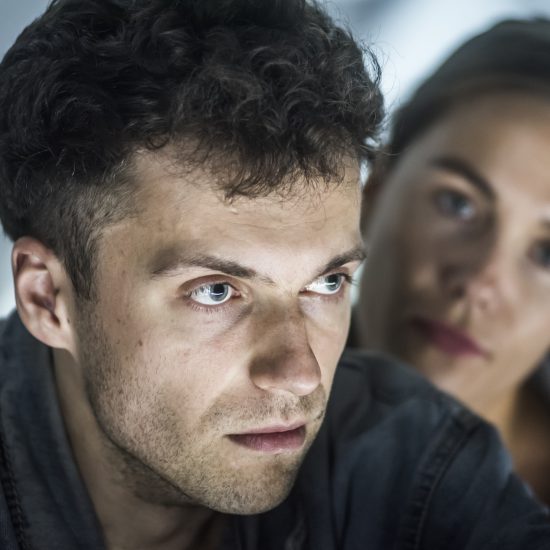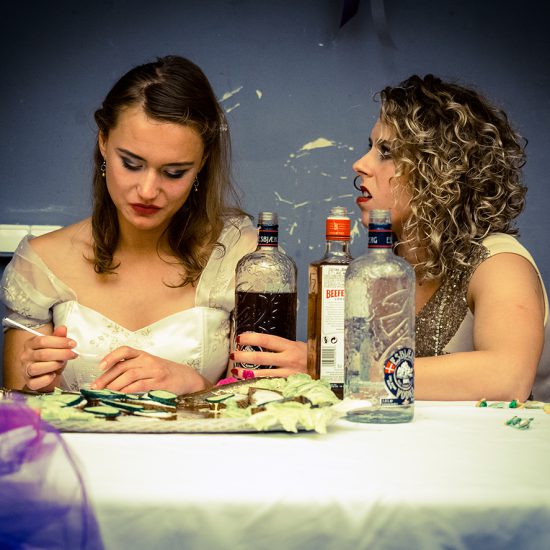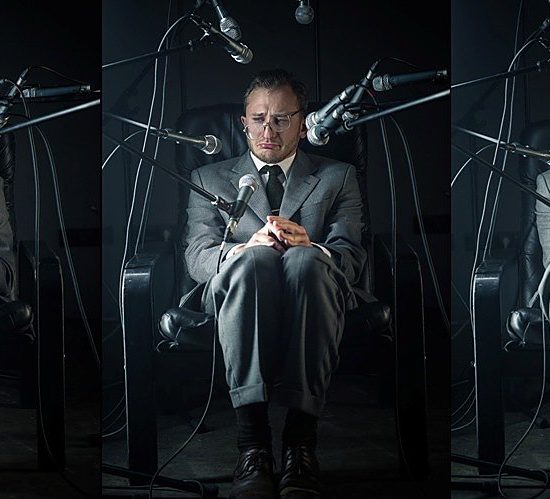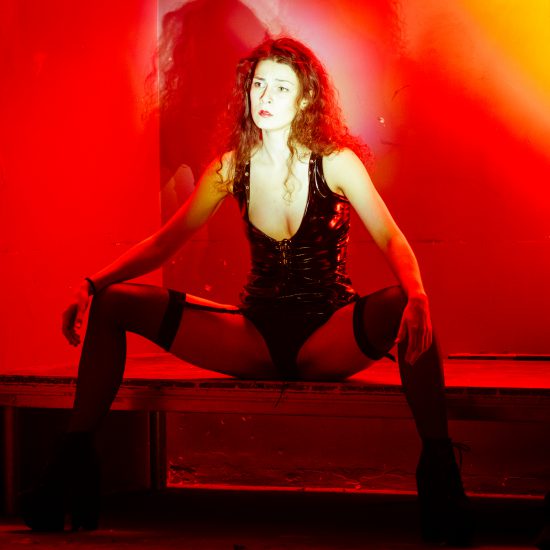Hamlet of Koršunovas: A mirror for souls
The reflections of nine faces – of men and women sitting with their backs towards us – stare at us from nine dressing-room mirrors. And they ask: “Who are you?” First in a whisper, then they burst and they start out-shouting each other until they reach a crescendo. We too are in the mirrors and, in that moment, the question resonates in ourselves as well. Together with the mysterious noise of a just switched-on neon light, coming as if from another world. Maybe from the one behind the mirror?!
Most of the critics who have reviewed this show repeat that it’s mainly about the theatre as an obsession, as an addiction, i.e. that it’s autobiographical for Korshunovas. And, indeed, these nine tables with mirrors are at one moment a background, at another a screen or an ordinary dressing-room object, and the actors are, indeed, actors who perform the play (they even play at the same time the main characters and the actors’ company visiting Elsinor).
However, the subject matter about theatre is, according to me, just a spring-board. Korshunovas goes much farther and much deeper than that. His Hamlet is rather about mirrors for human souls. If one chooses to take a really close, deep look at one own self, without a whiff of self-illusion, one takes on a road that is inevitably metaphysical. Because we have to only look deep down in our eyes in order to realize that our borders do not end where our body ends. It’s exactly along this road where the Lithuanian director takes us on a journey: the mirrors, i.e the looking inward – this so rare luxury today – as the “mouse-trap for our inner reality”. Hence the incredible depth of this show. And so that we find the journey easier and more entertaining – after all, aren’t these two things both a given and requirement of our times? – not only does Korshunovas “put on” a theatre costume, he inserts pop-culture references too. (Rosencrants and Guildestern dressed like drug-queens, contemporary songs, even vulgar hints…) And in a seemingly naïve manner he invites as a constant guest a giant Mouse, who peeps from behind or above the mirrors.
These references to the seemingly banal and daily routine, the ease with which the director juggles with entertainment and philosophy, and tight-ropes between the worlds of the visible and the invisible make Korsunovas reminiscent of Haruki Murakami. Exactly as with the great Japanese writer, who in all his books preceding Kafka on the Shore was as if preparing for his master-piece, in the Korshunovas last shows – in Hamlet as well – one can observe the simmering, the rumbling of something really extraordinary – a work of genius – which is about to erupt any moment now.
A scene of such nature in Hamlet is, for instance, the one with Ophelia who is being used as a bait. The mirrors are en face, next to each other, as in the very beginning of the show, but now in front of them, on them and on the tables – virtually everywhere – there are white flowers. White too is the dress of Ophelia who is right in the middle of all this. And behind the mirrors, hidden also behind flowers, are the eavesdroppers whom Hamlet doesn’t see in the beginning and of whom Ophelia, on her part, entirely forgets. And this is the big trick, the big move of the director. Because the kiss of the two is real, real are the words, the hope. Until the moment Hamlet realizes the trap. Then the whole heart-melting beauty of this scene all of a sudden becomes awfully ugly. Because it turns out to be false. This is the painful way in which Korsunovas introduces one of the most topical subject matters – or maybe already problems? – for and of our time: that falseness may well be nothing else but part of evil. And also: that it’s a total illusion that the compromise could stay without any consequences, even when we have managed to forget it.
Extraordinary too is the scene with the Ghost as a corpse in a morgue, lying on the tables in front of the mirrors – double from its very appearance (later on the same actor plays Claudius; in some scenes simultaneously between two mirrors!). Extraordinary too is the courageous cocktail in the last part of the show: the action takes place in a dressing-room and no one dies; the skull of Yorick is thrown out from the back of the mirrors and it’s from it that later on Gertruda drinks the poison; Hamlet again recites the first part of the “To be or not to be!” monologue and right afterwards Horacio simply concludes that “The rest is silence!”
The type of silence, though, which is possible in the theatre but not in the mirror, where our souls will continue to ask the question “Who are you?”. Of course, if we have the courage at all to take a close and deep look at the mirror, i.e. at them.



